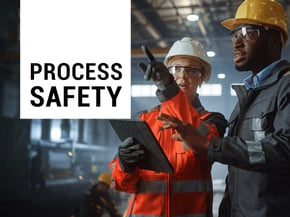Why do we have so many ammonia refrigeration plants?
With dairy, meat and other agricultural products making up a significant proportion of our food chain, it’s no surprise that we have a large number of ammonia refrigeration plants operating around the world.
Why do we use Ammonia, why not something safer?
Refrigeration plants can use a variety of motive fluids, with one of the most common materials for large-scale plants being anhydrous ammonia. Ammonia is commonly used as a motive fluid for several reasons:
- Ammonia is a non-ozone-depleting material
- Anhydrous ammonia is relatively cheap in comparison to other synthetic refrigerants.
- Although it can be ignited, anhydrous ammonia is far less flammable than alternatives such as propane
- Ammonia properties make it a very efficient refrigerant for use in the meat and dairy processing industries
All of these points make ammonia a great option for use in large-scale refrigeration plants, however unfortunately, ammonia also has a few properties that make its use rather hazardous:
- Ammonia is acutely toxic – inhaling anhydrous ammonia can lead to serious injury or death
- Anhydrous ammonia can behave as a dense gas – this makes it tend to travel as a concentrated cloud along the ground instead of dispersing up into the air. A significant leak of ammonia can form a very toxic gas cloud that can stick around for a long time
What are we doing wrong?
With the sheer number and scale of ammonia refrigeration plants being operated across the world, one might expect that operators would have a good understanding and appreciation for the hazards involved with anhydrous ammonia. However, evidence from several incidents, some very recent, has shown that there are still some serious shortfalls in how some facilities are being operated.
Several factors appear to have contributed to the frequency of incidents at ammonia refrigeration facilities. Here are some of the more prevalent ones.
- Operators lack process safety knowledge
An ongoing theme I have observed while working with companies operating ammonia refrigeration facilities has been the lack of in-house expertise when it comes to the hazards of working with anhydrous ammonia. Many operators will outsource their ammonia operations to external contractors while assuming that they will handle the process safety requirements of their site, however, this is not sufficient to effectively manage process safety at their facility.
Operating companies need to have good process safety knowledge for their business across the board, this is not just a recommendation but a legal requirement in many countries.

|

|

|
| Find out about our upcoming Hazardous Area Classification Training Course HERE! |
Find out about our next PROCESS SAFETY FOUNDATIONS course HERE |
We can provide your company with an SMS Auditing service. Find out more HERE! |
- Plants have been built up and expanded over time without adequate management of change
Many refrigeration plants operating in Australia and NZ are several decades old. Over time, these facilities have been upgraded and expanded to keep up with our growing industry. It’s not uncommon to find several separate ammonia refrigeration loops at one site, or systems that have had significant changes tacked on over the years to the point the site resembles something like the Frankenstein monster. Having several semi-separate systems increases a facility's complexity and therefore significantly increases the risk for something to go wrong.
- Refrigeration doesn’t get the attention it deserves
With refrigeration being a utility process for the meat and dairy industry, it is rare to find an operator where refrigeration is their primary business. All too often this part of the process comes second to production and food safety, and the required attention for working with such a hazardous substance is not always as good as it ought to be.
It’s not all bad news, things are getting better
It’s worth noting the significant efforts many businesses have been making to improve process safety within their facilities.
Several companies operating ammonia refrigeration facilities have taken significant strides in improving process safety at their plants. Businesses have taken up in-house expertise on process safety, engaged with consultants, and invested significant time and money into identifying the hazards at their facilities and improving safeguards to manage their risk.
What do we need to do?
Below are a few points that an operator of a refrigeration facility must understand before they can effectively manage the risk at their site:
- What can go wrong – what are the hazards and how are they caused
- What are the control measures that protect against the hazards, and how suitable are they for the specific hazard
- How likely is the risk and how severe is the harm that might result
- Are there enough control measures and are they effective enough to manage the risk, can we do more to reduce risk at our site?
To achieve this understanding, companies should develop a comprehensive and coherent safety assessment (CCSA). This process broadly includes the following steps:
- Hazard identification – what can go wrong
- Risk assessment – what is the severity of the hazard, how likely is it to occur
- Control identification – what do we have to protect against the hazard
- Control verification – what are we doing to ensure our risks are managed